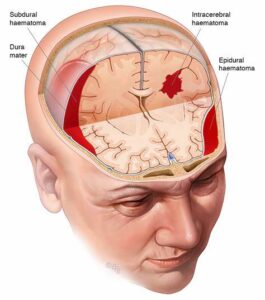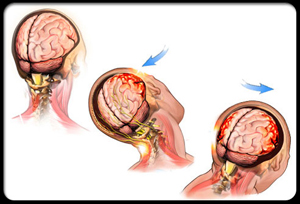Understanding the Root Cause of Traumatic Brain Injuries (TBI)
Traumatic Brain Injury (TBI) is a significant global health issue, affecting millions of individuals each year. It is defined as a disruption in normal brain function caused by an external force, such as a blow or jolt to the head. Understanding the root causes of TBI is essential for prevention, diagnosis, and treatment, as well as for mitigating its long-term impact on individuals and society. This blog dives deep into the underlying causes, risk factors, and mechanisms that lead to TBI, offering a comprehensive view of this critical condition.
What are Traumatic Brain Injuries:
To understand the root cause of TBI, one must first explore the mechanics of how the injury occurs. The human brain is a soft, delicate organ encased in the skull and cushioned by cerebrospinal fluid. Despite this protection, the brain remains vulnerable to injury from external forces. TBIs are caused by any event that disrupts the brain’s normal function, leading to bruising, bleeding, tearing of nerve fibers, or swelling.
Essential Things To Know About Brain Stroke | Stroke Treatment In Greater Noida-Dr Prashant Agarwal
Primary Causes of Traumatic Brain Injuries
1. Blunt Force Trauma: A direct impact to the head, such as in car accidents, falls, or sports injuries, is one of the leading causes of TBI. The impact can cause the brain to collide with the inside of the skull, leading to bruising and damage.
2. Acceleration-Deceleration Injuries: In these injuries, the head may not sustain a direct blow but experiences rapid movement, as seen in whiplash injuries or severe shaking. The sudden movement causes the brain to move within the skull, leading to shearing of nerve fibers.
3. Penetrating Injuries: Objects such as bullets or shrapnel that penetrate the skull can directly damage brain tissue, causing severe TBI.
4. Blast Injuries: Common in military personnel, the shockwaves from an explosion can disrupt brain function, even without direct head impact.
Root Causes: Breaking Down the Contributing Factors
1. Physical Trauma
Physical trauma is the most apparent root cause of Traumatic Brain Injuries. Events such as car accidents, falls, and assaults are the primary contributors. However, the type and severity of trauma play a significant role in determining the extent of brain damage.
• Falls: Falls are the leading cause of TBI, particularly among children and older adults. Slipping in bathrooms, falling from ladders, or tripping over obstacles can result in head injuries.
• Motor Vehicle Accidents: High-speed collisions often result in Traumatic Brain Injuries due to the force of impact and sudden deceleration. Motorcyclists and cyclists are particularly vulnerable.
• Sports Injuries: Contact sports like football, boxing, and rugby pose a high risk for TBIs. Repeated minor head impacts can also lead to chronic traumatic encephalopathy (CTE).
• Violence: Assaults, domestic violence, and gunshot wounds are significant contributors to TBIs in certain populations.
2. High-Risk Activities and Occupations
Engaging in certain activities or occupations increases the risk of Traumatic Brain Injuries:
• Construction Work: Falling objects, slips, or scaffold accidents frequently lead to head injuries.
• Military Service: Blast injuries and combat-related trauma are common causes of TBI among military personnel.
• Recreational Activities: Extreme sports, such as skiing, rock climbing, or skateboarding, carry an inherent risk of head injuries.
3. Underlying Health Conditions
Some pre-existing conditions can exacerbate the likelihood or severity of Traumatic Brain Injuries:
• Seizure Disorders: Individuals with epilepsy are at a higher risk of falls and resulting head trauma.
• Osteoporosis: This condition increases the risk of fractures, including skull fractures, during a fall.

• Alcohol and Drug Use: Substance abuse is a major contributing factor in many TBIs, impairing coordination, judgment, and reaction times.
4. Environmental Factors
Environmental hazards play a critical role in the occurrence of TBIs. Poor lighting, slippery floors, lack of protective gear, and unsafe driving conditions can all increase the likelihood of accidents leading to head injuries.
5. Socioeconomic and Demographic Factors
Certain groups are more vulnerable to TBIs due to their living conditions or access to resources:
• Age: Children under five, teenagers, and adults over 65 are at the highest risk for TBIs.
• Socioeconomic Status: Individuals from lower-income backgrounds often face higher risks due to unsafe living conditions, lack of access to helmets, and limited healthcare resources.
• Gender: Men are statistically more likely to sustain a TBI than women, possibly due to greater participation in high-risk activities and occupations.

Types of Traumatic Brain Injuries and Their Causes
Understanding the root cause also requires exploring the various types of TBI:
1. Concussion
• Cause: A mild blow to the head or rapid movement, such as in sports or minor car accidents.
2. Contusion
• Cause: A direct impact to the head that causes localized bruising of brain tissue.
3. Diffuse Axonal Injury (DAI)
• Cause: Rapid acceleration or deceleration, often seen in car accidents or shaken baby syndrome.
4. Penetrating Injury
• Cause: Objects such as bullets or shrapnel entering the brain.
5. Hematoma
• Cause: Ruptured blood vessels, often due to trauma or skull fractures.
Preventing the Root Causes of TBI
1. Personal Safety Measures
• Wear Helmets: Proper helmets should be used during biking, motorcycling, and contact sports.
• Use Seatbelts: Always buckle up in vehicles to reduce the risk of head injuries in accidents.
• Fall-Proof Your Home: Install grab bars, remove clutter, and use non-slip mats to reduce the risk of falls.
2. Workplace and Recreational Safety
• Protective Gear: Use hard hats and other safety equipment in hazardous work environments.
• Supervised Sports: Ensure proper coaching and adherence to safety protocols in sports.
3. Public Health Interventions
• Education Campaigns: Raise awareness about the importance of safety measures like helmet use and fall prevention.
• Road Safety Improvements: Install traffic calming measures and improve road conditions to prevent motor vehicle accidents.
Conclusion
Understanding the root causes of Traumatic Brain Injuries (TBI) is critical for developing effective prevention strategies and improving treatment outcomes. From blunt force trauma to environmental and demographic factors, the causes of TBI are diverse and complex. By addressing these root causes through education, safety measures, and public health interventions, we can reduce the incidence of TBI and its long-term impact on individuals and society. Whether it’s wearing a helmet, ensuring safer workplaces, or advocating for better healthcare access, every effort counts in the fight against TBI.





